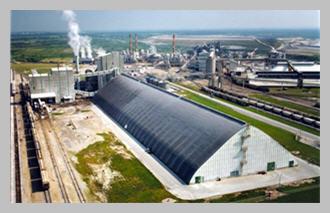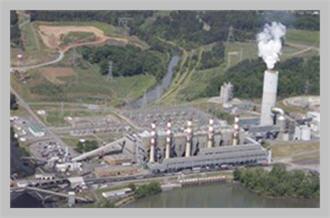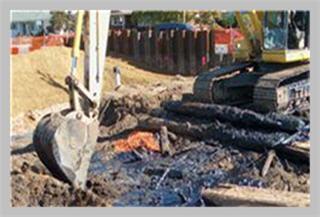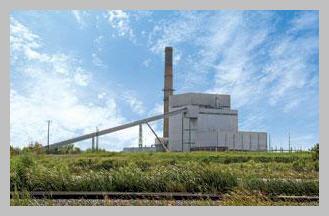Enforcement Annual Results for Fiscal Year (FY) 2015
EPA enforcement of the nation’s environmental laws is focused on large cases that drive compliance across industries and that have a high impact on protecting public health and the environment.
Our enforcement accomplishments include:
- $7 billion in investments by companies in actions and equipment to control pollution and clean up contaminated sites
- $404 million in combined federal administrative, civil judicial penalties and criminal fines
- $4 billion in court-ordered environmental projects resulting from criminal prosecutions
- 129 combined years of incarceration for sentenced defendants
- $1.975 billion in commitments from responsible parties to clean up Superfund sites
- $39 million for environmental mitigation projects that provide direct benefits to local communities across the country
Enforcement Highlights
Mosaic Fertilizer, LLC, one of the world’s largest fertilizer manufacturers, committed to ensuring the proper treatment, storage, and disposal of an estimated 60 billion pounds of hazardous waste at eight facilities across Florida and Louisiana, the largest amount of hazardous waste ever covered by a federal or state Resource Conservation and Recovery Act settlement.
A Clean Air Act settlement with Hyundai-Kia netted a $100 million fine, forfeiture of emissions credits and more than $50 million invested in compliance measures to help level the playing field for responsible companies and reduce greenhouse gas emissions fueling climate change.
 Mosaic Fertilizer will ensure proper handling, storage and disposal of 60 billion pounds of hazardous waste at eight plants.
Mosaic Fertilizer will ensure proper handling, storage and disposal of 60 billion pounds of hazardous waste at eight plants.
 Hyundai and Kia will spend $50 million to prevent future Clean Air Act violations and pay a record $100 million penalty.
Hyundai and Kia will spend $50 million to prevent future Clean Air Act violations and pay a record $100 million penalty.
 Duke Energy will spend more than $3 billion to clean up and close of coal ash impoundments in North Carolina.
Duke Energy will spend more than $3 billion to clean up and close of coal ash impoundments in North Carolina.
 Anadarko and Kerr McGee will spend $4.4 billion on cleanups and projects benefiting tribal and overburdened communities.
Anadarko and Kerr McGee will spend $4.4 billion on cleanups and projects benefiting tribal and overburdened communities.
 Noble Energy is using advanced emissions monitoring technology at its oil and gas exploration and production sites in Colorado.
Noble Energy is using advanced emissions monitoring technology at its oil and gas exploration and production sites in Colorado.
 Cal-Maine Foods will ensure compliance with the company’s Clean Water Act permit for an egg production facility in Mississippi.
Cal-Maine Foods will ensure compliance with the company’s Clean Water Act permit for an egg production facility in Mississippi.
 Coal-fired power plants across the country must control pollution and promote renewable energy development.
Coal-fired power plants across the country must control pollution and promote renewable energy development.
Noble Energy, Inc., a leading oil and gas producer, will use advanced monitoring technologies to detect air pollution problems in real-time, and ensure proper operation and maintenance of pollution control equipment at its facilities in Colorado.
EPA holds criminal violators accountable that threaten the health and safety of Americans. Three subsidiaries of Duke Energy Corporation, the largest utility in the United States, agreed to pay a $68 million criminal fine and spend $34 million on environmental projects and land conservation to benefit rivers and wetlands in North Carolina and Virginia. As part of the plea, two Duke subsidiaries will ensure they can meet legal obligations to remediate coal ash impoundments within North Carolina, which will cost an estimated $3.4 billion.
Settlements with Interstate Power and Light, Duke Energy Corporation and power companies in Arizona and New Mexico are cutting coal fired power plant emissions, requiring companies to control pollution and conduct innovative projects that promote renewable energy development and energy efficiency practices.
EPA is working closely with local governments and utilities in places like Fort Smith, Ark., Delaware County, Pa., and across Puerto Rico, to cut discharges of raw sewage and contaminated stormwater through integrated planning, green infrastructure and other innovative approaches.
Cal-Maine Foods, one of the nation’s largest egg producers, is implementing a series of measures to comply with laws that control pollutants, including nutrients and bacteria, from being discharged into waterways.
XTO Energy, Inc., a subsidiary of ExxonMobil and the nation’s largest holder of natural gas reserves, will restore eight sites in West Virginia damaged when streams and wetlands were filled to build roads, and implement a plan to comply with water protection laws.
Through settlements with three Nevada gold mining operations, Newmont, Barrick and Veris, EPA ensured that over 180 million pounds of mercury containing RCRA hazardous waste were treated, minimized, or properly disposed.
The largest bankruptcy-related cleanup settlement in American history, with Anadarko and Kerr McGee, will put more than $4.4 billion into toxic pollution cleanup, improving water quality and removing dangerous materials in tribal and overburdened communities.
EPA ensures federal agencies take responsibility and clean up toxic pollution. The Army addressed over 19 million cubic yards of contaminated groundwater at the Anniston Army Depot in Alabama, and the U.S. Navy and Defense Logistics Agency are required to implement at least $90 million in upgrades and improvements to prevent potential leaks at the Red Hill Bulk Storage Facility in Hawaii.
Progress on our National Enforcement Initiatives:
- Reducing Air Pollution from the Largest Sources
- Cutting Hazardous Air Pollutants
- Ensuring Energy Extraction Activities Comply with Environmental Laws
- Reducing Pollution from Mineral Processing Operations
- Keeping Raw Sewage and Contaminated Stormwater Out of Our Nation’s Waters
- Preventing Animal Waste from Contaminating Surface and Ground Water
